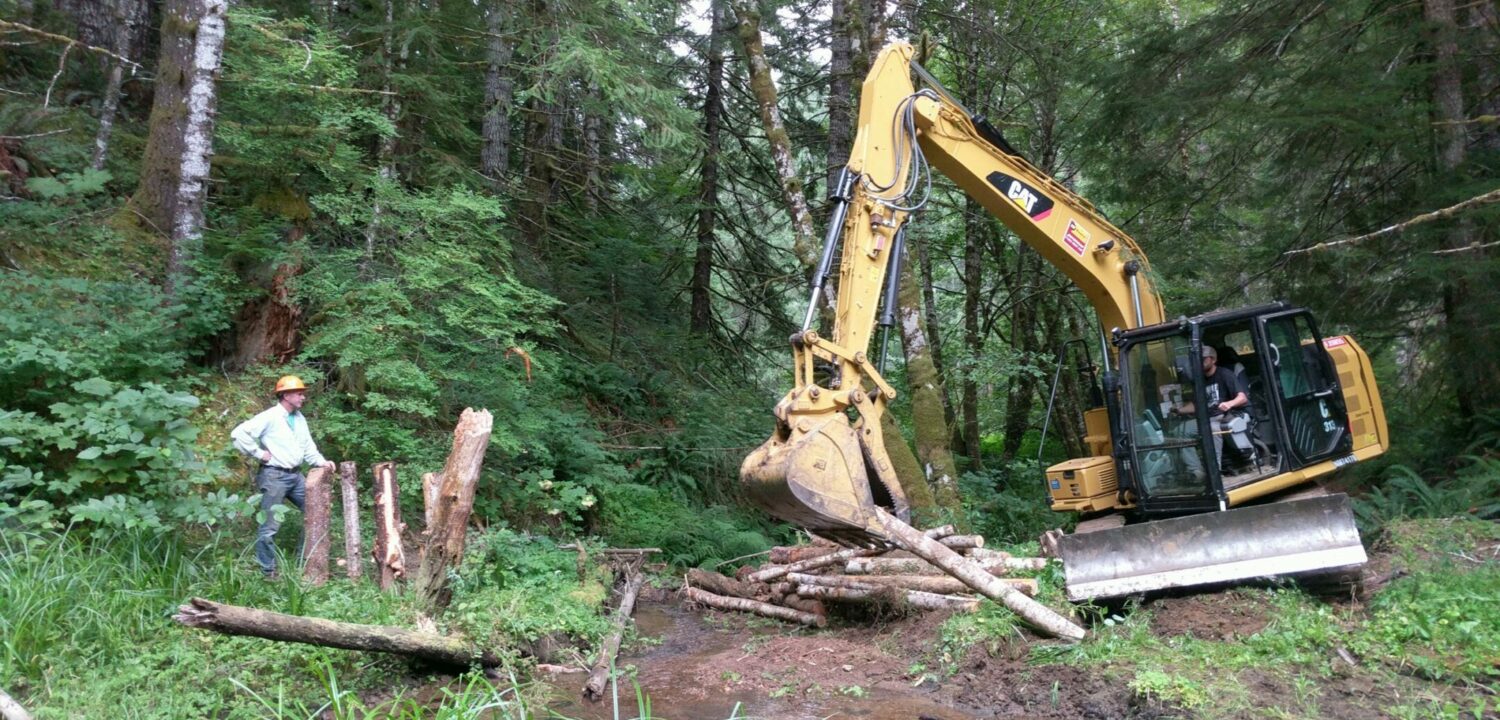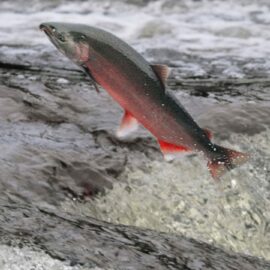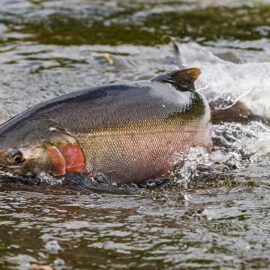Backed by years of planning and several major grants, Wild Salmon Center and partners are about to kick off a critical mass of salmon restoration projects in Oregon.
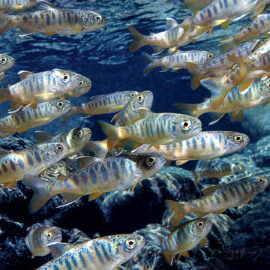
Six million dollars can accomplish a lot. Case in point: the Coast Coho Partnership—a public-private watershed restoration effort that now spans six Oregon watersheds. The goal? To recover Oregon Coast coho populations sufficient to see them removed from the endangered species list.
In 2017, the National Oceanic and Atmospheric Administration’s Restoration Center awarded a $2.7 million multi-year grant for coho recovery work to Wild Salmon Center, which co-manages the Coast Coho Partnership. The National Fish and Wildlife Foundation, a founding member of the Coast Coho Partnership, has awarded more than $1.2 million to local partners since 2018, with ongoing support pledged for projects in 2020 and 2021.
These funds are currently supporting a tranche of locally-managed projects in the Elk, Nehalem, and Siuslaw watersheds. The projects, which aim to reconnect rivers with their floodplains and restore critical coho habitat, can include invasive plant removal, building bridges and beaver dam analogs, installing large wood to enhance habitat complexity, and even lifting and widening altered stream beds.
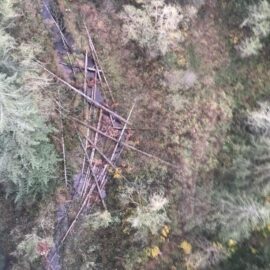
Now, an additional $2.3 million is being allocated to projects in the Upper Rogue, Coos Bay, and Siletz River watersheds, thanks to a second NOAA grant awarded to WSC in August 2019.
That means summer 2020 will see dozens of new and ongoing coast coho habitat restoration projects take place simultaneously across all six Oregon watersheds.
“It’s a lot of work,” admits WSC Southwest Oregon Program Director Tim Elder. “But it’s exciting to see years of project design get put into into action.”
For Oregon Coast coho, this is definitely the right time to act to shore up and enhance critical remaining habitat, before the negative effects of climate change multiply.
“Oregon’s coastal watersheds are mostly free-flowing, and coho hatchery production has been largely curtailed,” Elder explained. “Those are huge advantages when you’re trying to recover wild salmon populations.”
Below, learn more about some of the projects on Summer 2020’s packed field work calendar.
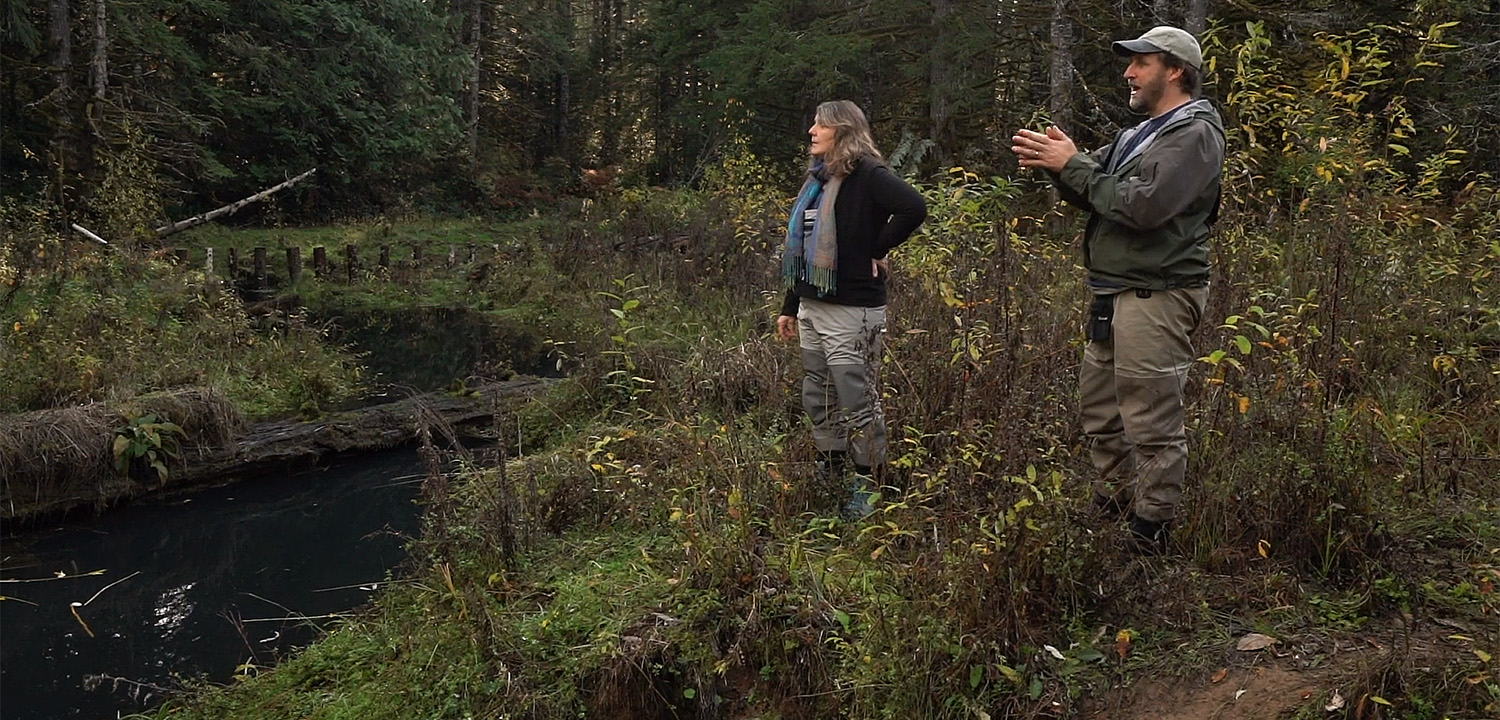
CEDAR CREEK PROJECT – Elk River
Local Partners: Curry Watershed Partnership, Curry Soil and Watershed Conservation District
This summer, local crews are scheduled to wrap up work re-meandering a heavily ditched 3,700-foot section of this Upper Elk River tributary. Previous work at this location included a culvert removal, riparian planting, and placing log structures to add habitat complexity within the now-reconnected floodplain. This summer, an old bridge over the removed culvert will be replaced with new, heavy-duty one that offers plenty of room for fish passage while maintaining a gravel company’s access to a quarry up the road.
WEST FORK COAL CREEK PROJECT – Nehalem River
Local Partner: Lower Nehalem Watershed Council
This project encompasses a quarter mile of the West Fork of Coal Creek. It, like other large wood projects funded in the Nehalem basin, aims to place logs in a reach with high potential to support coho through spawning and both summer and winter rearing. In addition to increasing forage and cover for juvenile coho, the project will enhance groundwater recharge and help to maintain the cool summer flows that make the Coal Creek Sub-Basin a priority for Nehalem coho recovery.
BESSEY’S NORTH FORK AND McLEOD CREEK PROJECT – Siuslaw River
Local Partner: Siuslaw Soil & Watershed Conservation District
Last summer, preparatory cultural and geological inspection here yielded an exciting discovery: a 9,000-year-old human artifact preserved within ancient soils. Archeologists have since given conservationists the green light to begin restoring this creek, which has cut a deep channel into the streambed. This summer, crew will work to reconnect 15 acres of floodplain and enhance a half-mile of off-channel habitat with large wood installation and riparian planting.
SALT CREEK FISH PASSAGE PROJECT – Upper Rogue
Local Partner: Rogue River Watershed Council
For years, private landowners with water rights on Salt Creek hedged against drought by installing temporary push-up dams—rock barriers that pooled the creek, preventing fish passage. The Rogue River Watershed Council worked with these landowners to design a fish-friendly alternative: in-stream screened “boxes” that keep the creek passable year-round. Installation of these boxes and associated site restoration work will take place this summer.
PALOUSE TIDE GATE REPLACEMENT – Coos Bay
Local Partner: Coos Watershed Association
Up and down the Oregon coast, hundreds of aging tide gates—structures designed to drain low-lying agricultural land and prevent tidal inundation—are starting to fail. According to Elder, the Palouse replacement project is intended to demonstrate how properly designed and managed tide gates can maintain working agricultural lands while also restoring the tidal connectivity essential for rearing coho. Advance work on this pilot project starts this spring, with crews monitoring the site’s water salinity, temperature, and tidal influence.
DRIFT CREEK PROJECT – Siletz River
Local Partner: Midcoast Watershed Council
The task here is to convert 80 acres of levee-ringed former dairy pasture owned by the U.S. Fish & Wildlife Service back to high-quality tidal wetlands. This summer, field crew will be on site studying the hydrodynamics of this estuarine area. Future work for this multi-year project will also include removing three fish passage barriers, enhancing 15 acres of riparian vegetation, and examining opportunities to reduce flooding on adjacent private properties and public infrastructure.
Summer 2020 will see dozens of new and ongoing coast coho habitat restoration projects take place simultaneously across all six Oregon watersheds.
